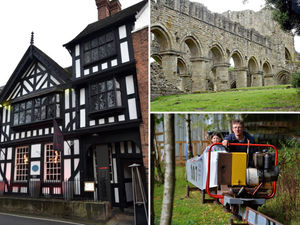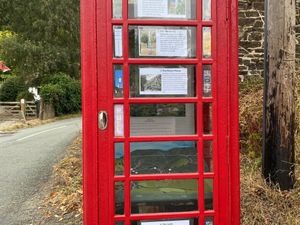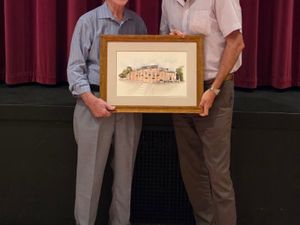How experts helped restore rare Second World War bomber back to former glory
After more than a decade of conservation efforts, a Second World War Vickers Wellington bomber has been restored to its former glory and is now on public display in Cosford.

The Wellington will be the centrepiece of a new Bomber Command exhibition opening this month at the RAF Museum.
In all, 11,462 of the planes were made between 1936 and 1945, making it the most-produced British bomber. Now, only two survive.
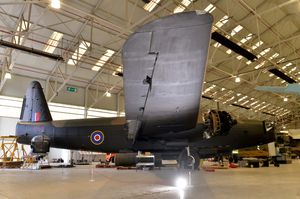
The fastest medium bomber of its time, and capable of carrying the biggest bomb load, the Wellington formed the backbone of the British bombing offensive against Germany for the early part of the Second World War.
What made it so successful, museum curator Tom Hopkins explained, was the Wellington’s unique structure.
Tom said: “Designed by Barnes Wallis, who designed the bouncing bomb, it has a geodetic airframe structure, which is this overlapping series of diamonds arranged in a spiral to form the fuselage and the wings.
“There is a lot of redundancy in the structure, which means if a lot of it got shot away in combat it’ll still maintain its structure.
“It got a reputation for being quite survivable, so it was very popular among its crews.”
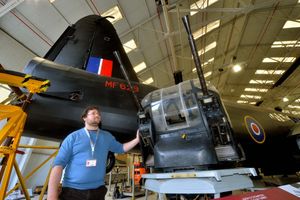
Towards the middle of the war, the use of the Wellington declined in favour of bigger, faster bombers like the Halifax and Lancaster. But the Wellington was not cast aside.
Tom explained: “From that point, we see Wellington’s withdrawal into secondary loads, and that’s when the Wellington shone again. It was very versatile and very capable.”
This later stage saw the Wellington take on a multitude of roles including training, anti-submarine patrols and transportation. Some of the bombers were even fitted with an aluminium coiled ring to generate a magnetic field to detonate magnetic anti-ship mines.
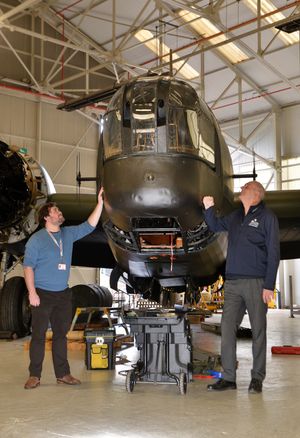
Cosford’s Wellington, made in May 1944, never saw combat. Placed almost immediately into storage, it was eventually converted for training. By the 1950s, it had retired.
“It had a final lease of life in 1954,” Tom explained, “when it was used during the filming of Dambusters. It was used as a camera aircraft to film the Lancasters and I believe appeared briefly in the film too.”
After almost 40 years on display at the Museum’s site in London, the aircraft was transported by road to Cosford’s Conservation Centre in July 2010.
The extensive restoration of the Wellington is one of the largest aircraft projects to be undertaken by the conservation team.
The work has been a collective labour of love by the museum’s technicians, apprentices and volunteers, including one who previously worked on Wellingtons during his RAF instructional airframe training more than half a century ago.
The restoration effort required a complete replacement of the bomber’s fragile Irish linen outer skin, which covered the geodetic aluminium structure.
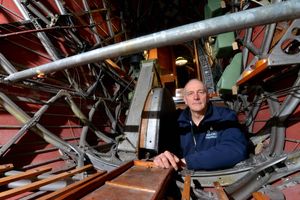
Conservation Centre manager Darren Priday explained: “Across the UK there’s maybe around 10 people who still have the skill to do this. It’s a very unique, olden-day skill that we are very lucky to still have within the museum with our surface finish technician, Clive Roberts.
“The problem is because she [the Wellington] is covered in fabric, when you put fabric indoors it starts drying out and goes quite brittle. She was starting to deteriorate.
“We started in 2010, but about three or four years ago she was earmarked for the exhibition. The main thing we needed to restore was fuselage, which has taken the best part of three years.”
The aluminium frame was treated for corrosion, and after Clive was done replacing the fabric, about a dozen layers of dope were applied to the craft. Dope, a mixture of cellulose dissolved in nitric acid, solidifies and tautens the fabric over the airframe.
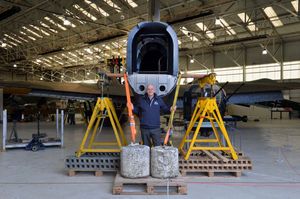
Keen to avoid a situation similar to Trigger’s well-maintained broom, the team worked hard to keep as much of the original plane as possible.
Darren explained: “We look for areas where there is deterioration and make a decision, we’re trying to keep as much of the original plane as possible. Sometimes it’s just a hoover and a dust, most of the time we just provide some TLC.”
The Wellington will form part of the new permanent exhibition which shares the Bomber Command story.
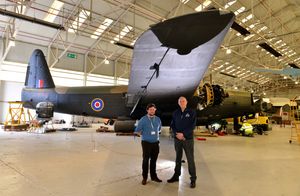
Curator Tom explained: “Bomber Command was the only branch of the armed forces that was able to really take the fight to the enemy. We’re telling that story.
“It’s been a really good opportunity to reorder the aircraft and get some smaller objects on display too. One of the most exciting of these is Guy Gibson’s Victoria Cross, Guy was the pilot who led the Dambusters raid. They’re quite rare, and to have one on display is very special to us.
“Our Bristol Blenheim will be joining the Wellington, brought together with various things like the Tiger Moth, V2 Rocket and V1 Doodlebug and smaller weapons too. It’s something new for people to see, and all very exciting.”
The exhibition will open to the public on May 16, 2023.

